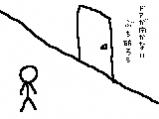Everyone correct me if i'm wrong
Turbo manifold: is the exhaust manifold that connects the engine and the turbo.
Down pipe: (Not sure about this one) It goes from the turbo to the b-pipe
In addition to the extra volume of air going through the engine you will also need to an more fuel. basically AIR + FUEL = Power.
To get more fuel:
1.) Raise fuel pressure as a function of boost.
2.) Use larger injectors along with a "fuel controller"(V-AFC, hondata, AEM EMS, SMC+, emanage, ...) to control the injector pulse so you get the right amount of fuel. Much better option than number 1
TUNE everything on a dyno with a wideband O2 to make sure you are getting the right amount of fuel.
Now you have lots of power so you'll need a new clutch b/c it won't be long until your stock clutch starts slipping.
Larger diameter exhaust will increase the performance
Hope this helps
Jason






 Reply With Quote
Reply With Quote




Bookmarks